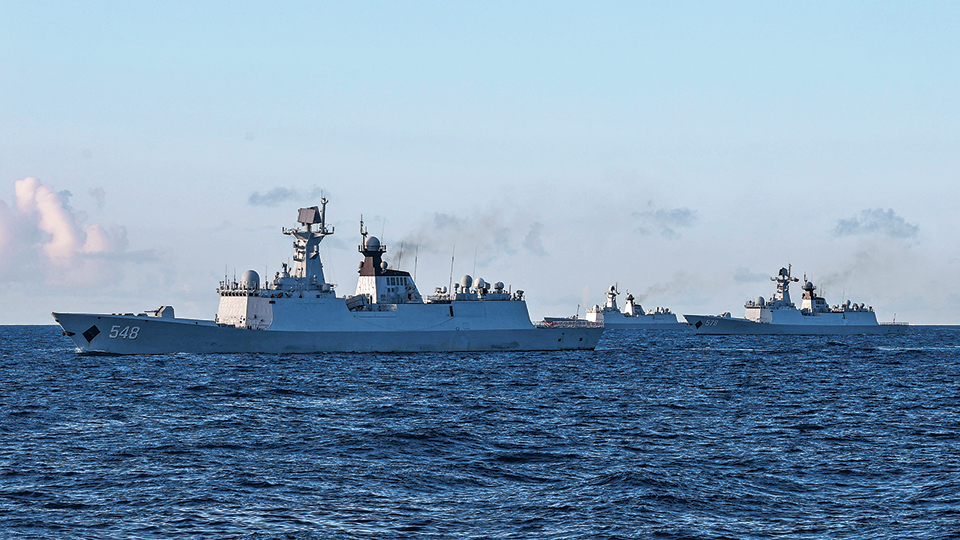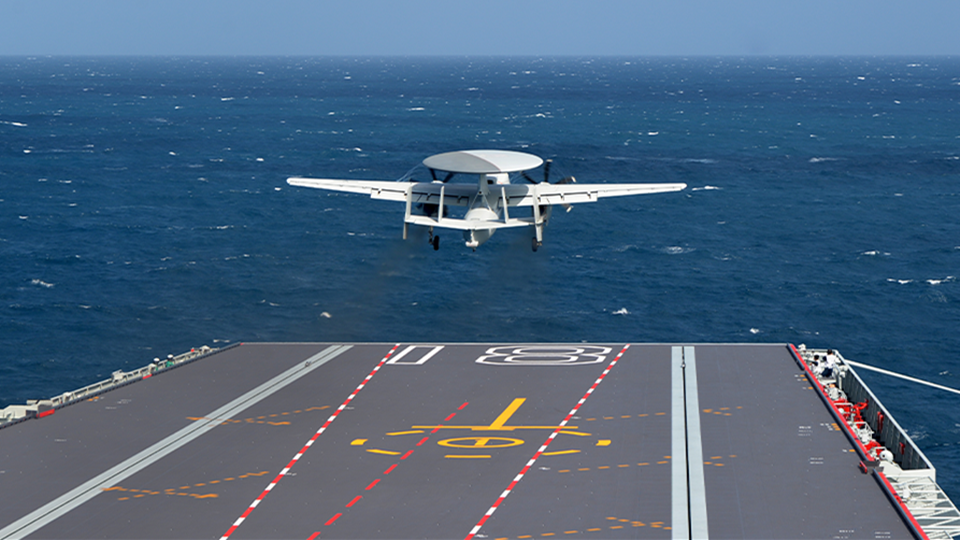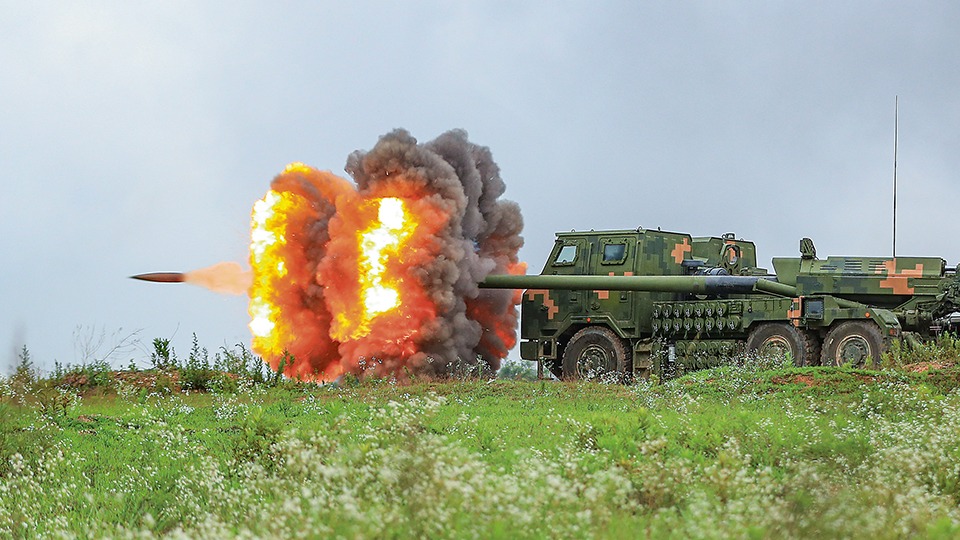By Sun Wenzhu
孙文竹
It is reported that the multinational exercise Talisman Sabre 2025, led by the US and Australia, was held in Australia and surrounding areas from July 13 to August 4. As a key US ally in the Asia-Pacific region, Japan has participated in the joint exercises six times between 2015 and 2025.
据报道,7月13日至8月4日,由美国及澳大利亚主办的“护身军刀2025”多国联合军演在澳大利亚及周边地区举行。作为美国在亚太地区的重要盟友,日本2015年至2025年已六度参加“护身军刀”联合军演。
Over the past decade, Japan has gradually broken away from the constraints of the pacifist constitution and the "exclusively defense-oriented" policy through its participation in the Exercise Talisman Sabre. This reflects Tokyo's ongoing efforts to move beyond the post-war system, expand its military influence overseas, and pursue its ambition of reemerging as a regional military power, which seriously undermines peace and stability in the Asia-Pacific and challenges the post-war international order.
10年来,日本通过参加“护身军刀”,逐步突破“和平宪法”与“专守防卫”原则的束缚,试图摆脱战后体制,折射出其持续在海外扩张军事影响、企图再度成为地区军事大国的战略野心,严重冲击亚太地区和平安宁与战后国际秩序。
The biennial Exercise Talisman Sabre series began in 2005. The 2025 iteration includes over 35,000 personnel from 19 countries, including the US, Australia, Japan, the ROK, the UK, and France, and, for the first time, extends beyond Australian territory to Papua New Guinea, making it the largest exercise in the history of the series. In 2015, Japan shifted from an observer role to a full participant in the exercises. Since then, the Japan Self-Defense Forces (JSDF) have taken part in it six times over the past decade.
“护身军刀”系列军演始于2005年,每两年举行一次。“护身军刀2025”共有来自美、澳、日、韩、英、法等19国超过3.5万人参加,演习区域首次延伸到澳大利亚领土之外的巴布亚新几内亚,成为该系列军演史上规模最大的一次。2015年,日本由“护身军刀”军演的观察员国转为正式参演国。10年来,日本自卫队6次参加“护身军刀”。
Japan has used the Exercise Talisman Sabre series to steadily enhance its offensive military capabilities. Since its first participation in 2015, the Japan Ground Self-Defense Force (JGSDF) has regularly dispatched amphibious units to take part in landing drills simulating so-called "island recapture" operations, a recurring training scenario in Japan's involvement in the exercises. Starting in 2019, the Japan Maritime Self-Defense Force (JMSDF) has deployed major warships such as the helicopter carrier Izumo and the helicopter destroyer JS Ise to participate alongside aircraft carriers and similar vessels from the US, the UK, and Australia, thereby improving its cooperative combat ability in air and naval warfare. During the 2023 exercise, Japan conducted its first-ever test launches of the Type 12 surface-to-ship missile and the Type 03 surface-to-air missile on Australian territory. By doing so, Japan used Australian soil to circumvent its domestic legal restrictions and completed live-fire drills that would not have been permitted on its territory. In 2025, Japan once again conducted test launches of the aforementioned two types of missiles during the exercise and, for the first time, participated in space warfare training. Japan's intention to consistently use overseas military exercises to enhance its offensive military capabilities has become increasingly apparent.
日本借助“护身军刀”不断提升自身进攻性军事能力。从2015年首次参演起,日陆上自卫队派出两栖作战部队参加登陆作战演习,模拟所谓“夺岛”行动,这已成为日本参加“护身军刀”的常规课目。2019年起,海上自卫队多次派出准航母“出云”、直升机驱逐舰“伊势”等主力舰艇,同美、英、澳等国航母及准航母共同参演,提升海空行动中的协同作战能力。2023年参演期间,日本首次在澳大利亚试射“12式”地对舰导弹和“03式”地对空导弹,利用澳大利亚领土突破国内法律限制,完成了在日本本土无法进行的实弹试射。2025年,日本再次在参演期间试射上述两型导弹,并首次参加太空作战训练。日本常态化利用境外军演提升自身进攻性军事能力的意图愈发明显。
In recent years, Japan has sought to build a "US-Japan Plus" security cooperation framework based on the US-Japan alliance, aiming to expand its influence across the so-called Indo-Pacific region and even globally. Since 2022, Japan has successively signed Reciprocal Access Agreements (RAAs) with countries such as Australia, the UK, and the Philippines to establish "quasi-alliance" relationships. During the Exercise Talisman Sabre 2025, the JSDF conducted test launches of the Type 12 missile with support from the Australian military and provided support to French forces in amphibious landing drills. Building on this, Japan plans to dispatch approximately 600 members of its Amphibious Rapid Deployment Brigade (ARDB) to participate in the US Marine Corps' annual training deployment at Darwin Base, where they will train alongside Australian forces under the guidance of the US Marine Corps on littoral combat operations. In addition, among the participating countries in the Exercise Talisman Sabre 2025, the Philippines, Thailand, Indonesia, Tonga, and Papua New Guinea are all recipients of Japan's Official Security Assistance (OSA) framework. Under the pretext of maintaining defense cooperation, Japan has sought to draw these countries into the joint exercise in an attempt to win them over.
近年来,日本在美日同盟基础上,着力构建“美日+”安全合作框架,试图提升其在印太地区乃至全球范围内的影响力。2022年以来,日本接连同澳大利亚、英国、菲律宾等国签署《互惠准入协定》,构建“准同盟”关系。“护身军刀2025”军演期间,日本自卫队在澳军支持下实施“12式”导弹试射,并为法军的登陆作战课目提供支援。以此为开端,日本将派遣约600名两栖作战部队“水陆机动团”成员,参加美海军陆战队在达尔文基地的年度部署演训,同澳军一道就浅海作战课目接受美海军陆战队指导。此外,“护身军刀2025”的参演国中,菲律宾、泰国、印尼、汤加、巴布亚新几内亚均是日本“官方安全援助”机制的对象国,日本以维护防务合作为由,推动这些国家共同参演,妄图加以拉拢。
By using the exercise to test multiple weapons systems, Japan continues to enhance its offensive military capabilities, which has raised serious concerns among its Asian neighbors about the possible resurgence of Japanese militarism. This year marks the 80th anniversary of the victory of the Chinese People's War of Resistance Against Japanese Aggression and the World Anti-Fascist War. Japan should take a hard look at its responsibility for the war crimes, draw lessons from history, be prudent with its words and deeds in the military and security domains, abandon the Cold War mentality, and act to keep the region peaceful and stable. Only in this way can it gain the trust of its Asian neighbors and the international community.
日本借军演测试多款武器系统,不断提升自身进攻性军事能力,引发亚洲邻国对日本军国主义死灰复燃的高度警惕。今年是中国人民抗日战争暨世界反法西斯战争胜利80周年,日本尤其应当深刻反省历史罪责,认真汲取历史教训,在军事安全领域谨言慎行,摒弃冷战思维,以实际行动维护地区安全稳定,赢得亚洲邻国和国际社会的信任。
(The author is an associate research fellow at the Department for American Studies, China Institute of International Studies.)
(作者系中国国际问题研究院美国所副研究员)




















